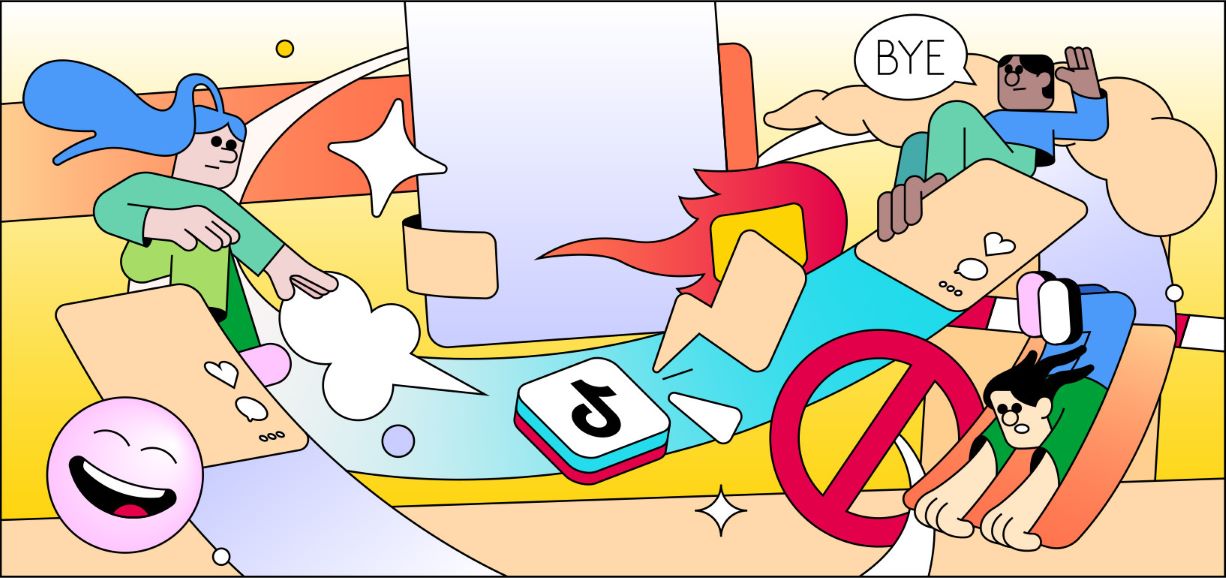Tick..tock…tick…tock. No, I’m not referencing the famous Ke$ha song. Rather, I’m counting down the seconds to a potential TikTok ban in the United States and beyond.
None of us want it, but it’s possible. Countries worldwide are already doing it, and brands that didn’t prepare are suffering from the sudden loss in a highly visible, profitable channel. But we still have time to prepare for the inevitable. The question is, how?
Let’s explore what’s happening with the US TikTok ban, what brands are doing to prepare, and what you should do before it happens in your country.
The Countdown: Timeline of TikTok Bans Across the World
Not watching what’s happening in other parts of the world could blindside you. Especially with many countries jumping aboard the bandwagon to create laws and regulations that seem to be in the best interest of their countrymen (and women).
So here’s a look at what’s been happening with the US TikTok ban since the pandemic:
- January 2020: The US Army and Navy ban TikTok on government devices, labeling it a security risk.
- August 2020: Then-President Donald Trump issues executive orders demanding ByteDance divest TikTok’s US operations within 90 days, citing national security concerns.
- November 2020: Joe Biden is elected president, putting Trump’s plans to force a TikTok sale on hold.
- June 2022: BuzzFeed reports that China-based ByteDance employees accessed nonpublic information of TikTok users, reigniting privacy concerns.
- December 2022: FBI Director Chris Wray raises concerns about TikTok’s potential for Chinese influence operations.
- February 2023: The White House orders federal agencies to remove TikTok from all government-issued devices within 30 days.
- March 2023: TikTok CEO Shou Zi Chew testifies before Congress in a six-hour hearing, attempting to address security concerns.
- May 2023: Montana becomes the first US state to enact legislation banning TikTok, though a federal judge later blocks the ban.
- March 2024: A bill to ban TikTok or force its sale to a US company gains momentum in Congress.
- April 2024: President Biden signs legislation requiring ByteDance to sell TikTok to a US owner within a year or face shutdown.
- August 2024: The FTC sued TikTok and ByteDance for violating COPPA by collecting data from children under 13 without parental consent. Brands and creators targeting younger audiences must comply with privacy laws like COPPA to avoid severe legal consequences and ensure their marketing strategies align with these regulations.
It’s a slow burn, but steaming up nonetheless. So don’t overlook it as a ‘not yet’ moment. Because there could be a TikTok ban in 2024.
The TikTok Ban in Other Markets
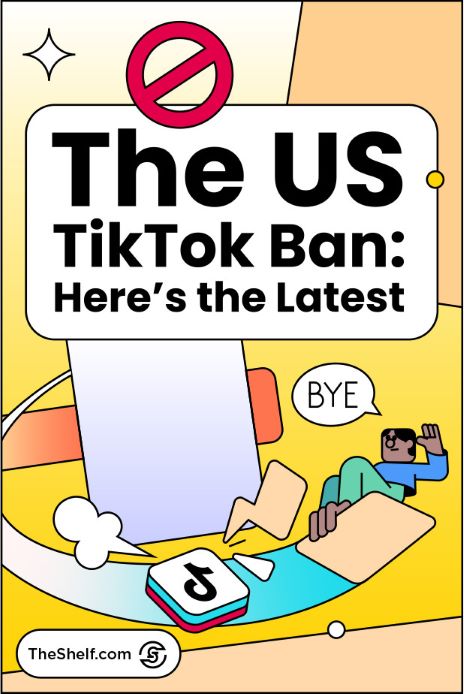
The US TikTok ban isn’t the only market to be concerned about. If the platform goes down in an area you service, your visibility disappears on that channel instantly. And if you didn’t prepare, you’ll lose an audience, with no way to get them back.
On that note, several countries have already banned or limited the popular app. The most significant of these occurred in India in 2020, marking a pivotal moment in TikTok’s global journey.
India, once TikTok’s largest market with approximately 200 million users, abruptly banned the app on June 29, 2020. This decision followed a violent border clash with China, citing national security and data privacy concerns. The ban’s impact was immense, affecting not only users but also content creators who built livelihoods on the platform.
Then the notion of a TikTok ban spread like a pandemic:
- Afghanistan: Banned TikTok in 2022, citing concerns about protecting youth from misinformation
- Nepal: Imposed a nationwide ban in November 2023, citing disruptions to “social harmony”
- The European Commission, European Parliament, and EU Council: Banned TikTok on staff devices
- Several European countries (Belgium, Denmark, France): Prohibited the app on government-issued devices due to cybersecurity and privacy concerns
- Australia, Canada, New Zealand: Implemented similar bans on official devices
- Taiwan: Imposed a public sector ban
- Pakistan: Enacted several temporary bans since 2020
Well, that was a mouthful and a major wake-up call for anyone in denial of a potential TikTok ban bill passing in their region.
These bans reflect growing global concerns about data security, privacy, and the potential influence of the Chinese government through ByteDance, TikTok’s parent company. As more countries consider restrictions, the future of TikTok’s global presence remains uncertain. So get ready before it’s too late.
Why Governments Are Giving TikTok the Side-Eye
Let’s face it, TikTok isn’t just a place for dance challenges and cat videos anymore. Governments worldwide are eyeing the app with more suspicion than a parent watching their teenager’s first date. But why all the fuss?
Let’s break it down:
Data Privacy: The Big Brother Concern
Governments are worried that TikTok is collecting more data than a nosy neighbor. With its parent company ByteDance based in China, there are fears that user data could end up in the hands of the Chinese government faster than you can say “viral dance trend.”
But this suspicion doesn’t come from nowhere.
In 2022, TikTok admitted that employees had accessed the location data of U.S. users, including journalists, to track their movements. This incident raised serious questions about the extent of data collection and who has access to it.
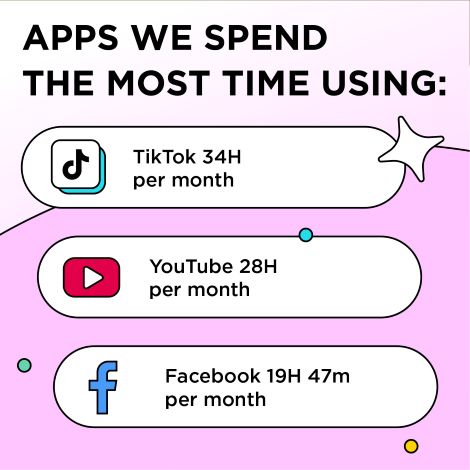
National Security: The Trojan Horse Theory
Some officials view TikTok as a potential digital Trojan horse. They’re concerned the app could be used for espionage or to manipulate public opinion, turning your harmless scrolling session into a national security threat.
U.S. intelligence officials have raised alarms about TikTok potentially being used for covert influence operations. The fear is that the app’s algorithm could be manipulated to promote or suppress certain content, potentially swaying public opinion on sensitive issues.
Political Factors: The Geopolitical Chessboard
Let’s not forget how countries are using TikTok as a pawn in international relations. As tensions rise between China and other countries, TikTok has become a strategic political weapon.
In 2020, India banned TikTok along with 58 other Chinese apps following a border clash with China. This move was seen as a political response to escalating tensions between the two countries, highlighting how TikTok has become entangled in broader geopolitical conflicts.
Misinformation: The Truth is Out There… Somewhere
There’s growing concern about TikTok’s potential role in spreading misinformation. Some worry it’s becoming less “For You Page” and more “Fake News Feed.”
During the 2022 U.S. midterm elections, researchers found that almost 20% of TikTok videos in search results contained misinformation. This included manipulated videos and false claims about election processes, demonstrating the platform’s vulnerability to becoming a vector for spreading false information.
While these concerns are serious, it’s worth noting that TikTok isn’t the only app collecting data or potentially spreading misinformation. As the debate rages on, one thing’s for sure: the TikTok dilemma is far from over.

The Unthinkable Happens: TikTok Gets Banned…What now?
Just when you thought you had TikTok marketing all figured out. It’s over. Well, sort of.
The potential TikTok ban is unexpected, but full of new opportunities.
For marketers and brands, losing TikTok would be like saying goodbye to that friend who always knew the coolest hangout spots. Sure, it’s a major blow to reaching Gen Z and millennials, who’ve made TikTok their digital stomping ground. But who said this was the only place to make your mark on the web?
All those carefully crafted strategies and TikTok influencer partnerships don’t have to be over — they just need a quick makeover and a new set. You still have other platforms, like YouTube shorts and Instagram Reels, to share your products and services.
A TikTok ban could spark a renaissance in social media marketing. Brands may rediscover the charm of platforms they’ve neglected, or better yet, uncover the next big thing. It’s like being forced to clean out your closet and then finding a favorite outfit you thought you lost forever.
For users, it’s a matter of finding a new social platform to call home. There are plenty out there, so it’ll be fun to see which ones stick. Change doesn’t always have to be a bad thing. It’s all in how you take it advantage of it. And as always, wherever the users go, brands will follow.
What Brands Should Do Now…Before a TikTok Ban
The good news in all of this is there’s still time to prep your brand for a potential TikTok ban. But where to begin?
You can start by identifying where you can still reach your audience without them having to sign up to a new platform. One way to find out is to simply ask them which platforms they prefer to use outside of TikTok.
But don’t make the same mistake — rather than moving to the best social media network, pick the top three. Diversifying your online presence will save you the headache of re-platforming again in the future.
Plus, it ensures you achieve max visibility with your current and future followers.
Here’s a look at other ways to prepare for a potential TikTok ban:
- Diversify like it’s your social media portfolio: Don’t put all your eggs in one TikTok basket! Spread your content love across multiple platforms. Instagram Reels, YouTube Shorts, and even the new kid on the block, Threads, are all hungry for your creative genius.
- Master the art of content shape-shifting: That viral TikTok dance? Transform it into a snappy Instagram Reel. Your witty product showcase? Turn it into a Pinterest-worthy infographic. Become a content chameleon and watch your cross-platform engagement soar!
- Get cozy with your analytics: Dive deep into your data like it’s a pool on a hot summer day. Understand which content performs best on each platform. This knowledge is your secret weapon for a post-TikTok world.
- Build your own digital playground: Don’t rely solely on rented land. Beef up your owned media channels like your website and email list. These are your digital fortresses that no ban can touch.
- Experiment with emerging platforms: Be the early bird that catches the worm on up-and-coming platforms. Remember, TikTok was once the new kid on the block too!
- Craft a TikTok exit strategy: Hope for the best, but plan for the worst. Have a clear roadmap for migrating your TikTok audience to other platforms. Maybe it’s time for that newsletter you’ve been putting off?
- Double down on community building: Focus on creating genuine connections with your audience that transcend any single platform. A loyal community will follow you anywhere – even if TikTok becomes a digital ghost town.
I asked Brooke Paulin, the CEO and founder of Biohacker Supply, about her company’s steps for prepping for a TikTok ban. Here’s what she told me:
“We’ve been coordinating contingency plans with our influencer partners to mitigate potential disruptions from a TikTok ban. Thankfully, many of our highest-value creators have proactively assured me they’re already priming their audiences for a transition to platforms like Instagram Reels, Lemon8, and YouTube Shorts.
She also has several marquee ambassadors under longer-term annual contracts or multi-product promotional commitments, so maintaining that hard-won community continuity is paramount.
“They’re driving traffic through calls-to-action like limited promo codes, incentivizing their tribes to transcend beyond TikTok alone,” continues Paulin. “They seem quite confident though that their most dedicated fans will follow them across channels.”
However, not everyone feels an urgency to switch platforms.
Alternatives to TikTok for Marketing
Whether you believe a TikTok ban is looming or not doesn’t matter. What matters is having an exit plan that doesn’t disrupt your digital marketing. So, marketers must explore alternative channels to continue reaching their target audience.
It’s tough to beat TikTok’s massive audience of 18 to 34-year-olds, but here are several to consider:
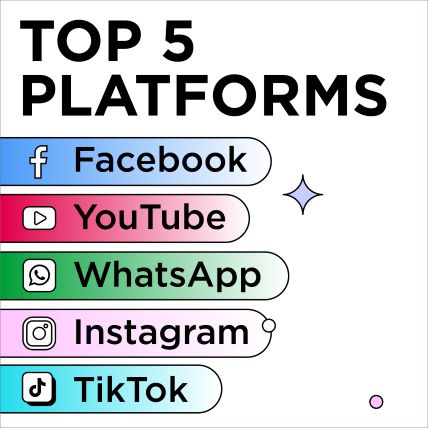
Instagram Reels
Instagram’s short-form video feature is similar to TikTok, so it makes sense for marketers to adopt this as their alternative platform.
“We’ve started engaging more in Instagram Reels since it’s similar in content presentation,” shares Kartik Ahuja, a digital marketing consultant. “Switching video content to Instagram Reels increased engagement to around 20 percent more for beauty clients and also allowed them to gain about 15 percent more followers in three months.”
It’s also popular among celebrities, influencers, and brands like Nike, National Geographic, and Sephora. Makes sense when the platform boasts 2 billion monthly active users as of 2024.
Reels are perfect for reaching a broad, engaged audience, especially if your target demographic is under 45. It’s also ideal for visual storytelling, product demonstrations, and trend-based content.
Best formats: 15-60 second vertical videos, often set to music or with voiceovers. Trending audio, challenges, and effects perform well.
YouTube Shorts
YouTube Shorts is another popular option for short-form video content.
You’ll find notable users like MrBeast, Charli D’Amelio, and various brands using it to build their follower base (and with great success). But there’s enough to go ‘round with YouTube’s 2.49 billion monthly active users (Shorts averaging 70 billion views per day, according to Neal Mohan — YouTube’s CEO).
“We’re doubling down on Instagram Reels and YouTube Shorts, not just because they mimic TikTok’s format, but because they integrate into broader ecosystems that offer richer, more varied content opportunities,” says Ilia Tretiakov, lead strategist and owner of So Good Digital. “We’ve already started experimenting with YouTube Shorts, emphasizing educational content that provides value and drives organic growth. Our preliminary results show higher retention rates on YouTube, as the platform’s algorithm tends to favor substantive content over fleeting trends.”
YouTube Shorts are powerful for content creators offering quick and engaging videos up to 60 seconds long. They provide a way to reach a broad audience, tease longer content, and boost visibility on the platform.
Best formats: Vertical videos up to 60 seconds, often educational, entertaining, or behind-the-scenes content. Using popular music and participating in trends can boost visibility.
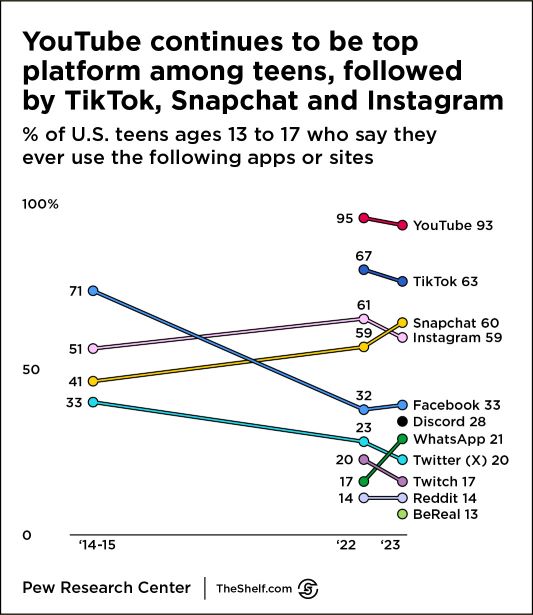
Twitch
Twitch is a live streaming platform, primarily known for gaming content but expanding to other areas.
If you’re into gaming, then you likely know top streamers like Ninja and Pokimane and brands like Wendy’s and KFC that have embraced gaming culture.
This platform is worth it for its user base alone: over 240 million monthly active users.
It’s ideal for brands looking to engage with younger audiences, particularly in the gaming and tech spaces. It’s excellent for real-time interaction and building a community.
Best formats: Live streams, chat interactions, and sponsored streams with popular creators. Consider hosting Q&As, product launches, or behind-the-scenes content.
Threads
Threads is the new kid on the block that many wanted like (in light of the Elon Musk takeover of Twitter). During its initial launch, it gained 150 million users within two weeks.
It’s a text-based social media platform created by Meta, designed for sharing updates and joining public conversations. One of its top users is Mark Zuckerberg (gasp!), Shakira, Jennifer Lopez, and various celebrities and influencers from Instagram.
Although it fizzled a little, it wasn’t by much, averaging around 130 million monthly active users as of 2024.
It’s nothing like TikTok, but it can still be part of your social media marketing strategy. Threads allow you to engage in text-based conversations, share quick updates, and connect with a broad audience. They’re particularly useful for brands looking to maintain a conversational presence and capitalize on trending topics.
Consider using Threads when targeting a younger demographic, since 37% of users are in the 18-24 age bracket. Plus, it’s available in over 100 countries, so you can connect with a broad audience.
Best formats for marketing:
- Short, engaging text posts (up to 500 characters)
- Polls and questions to encourage audience interaction
- Sharing links with brief commentary
- Cross-posting content from Instagram
- Joining and contributing to trending conversations
Pro Tip: Use your existing Instagram following to build your Threads audience quickly, since the platforms are closely integrated.
Remember, the key to success on any platform is understanding its unique features and audience preferences. As you explore these alternatives, focus on creating authentic, engaging content that resonates with your brand’s voice and values.
And don’t just settle for the platforms we list — continue searching for other up-and-comers that could benefit your brand and audience.
“We’re exploring up-and-coming platforms like Byte and AltSpaceVR. When evaluating these platforms, we consider not just user demographics and engagement metrics, but also the platform’s potential for immersive and interactive content,” explains Tretiakov. “For instance, AltSpaceVR’s virtual reality environment offers unique storytelling possibilities that can create deeper, more memorable brand experiences. This focus on innovative, less conventional platforms sets us apart and prepares us for the future of digital engagement.”

Future of Social Media Marketing Post-TikTok Ban
TikTok: will it stay, will it go? We don’t know. If you know, you know (to the old heads who enjoyed 90s R&B). The only thing we know for sure is that marketers and brands will continue to do as we’ve always done — learn and adapt.
We’ve done it when MySpace came and went. And we quickly (more so than others) jumped aboard TikTok after Facebook became the lame platform for the younger crowds.
And we’ll continue to do the same.
The only thing you need to figure out is which platforms you’ll migrate to when the ish hits the fan with TikTok. Having a scapegoat already set up is your best bet. So get your audience in on the transition so they don’t miss a beat if and when TikTok is banned.
Don’t Panic, Prepare for the Worst (Just in Case)
No one’s ready for a TikTok ban, even if you already have other platforms in place to take its place. This is especially true if you have TikTok creators and large audiences on the platform.
But as marketers and brands, we must stay ahead of the curve. With the above tips and strategies, you can be well-prepared for any platform that becomes obsolete.
And who knows, maybe this TikTok ban will go away and nothing happens. The worst that would happen is you now have other platforms to engage with your audience.
Then if the TikTok ban comes to light, your strategies won’t be phased one bit.
“I’m not focusing on building my following on other social media platforms more than I was before the TikTok ban because the bill is fundamentally flawed and raises numerous unprecedented First Amendment issues,” shares Cheyenne Hunt, J.D., big tech accountability and GenZ policy advocate.
The inherent legal challenges suggest that the bill will be entangled in court proceedings for years, as it navigates through complex judicial scrutiny. Given the high probability that the ban will either be overturned or rendered obsolete by future corrective legislation, shifting my efforts to other platforms now seems premature. Instead, I prefer to wait for the legal process to unfold, confident that the current disruption is likely temporary.”
Since there’s no way to predict the outcome, all we can do for now is wait and see.

About This Author
Saphia Lanier | B2B Content Expert
Marketer. Journalist. Strategist. A powerful combo for B2B SaaS brands looking for customer-centric content that attracts and converts. My 15 years in digital marketing and magazine/newspaper writing prepped me to develop well-researched long-form content that edutains and drives action.


